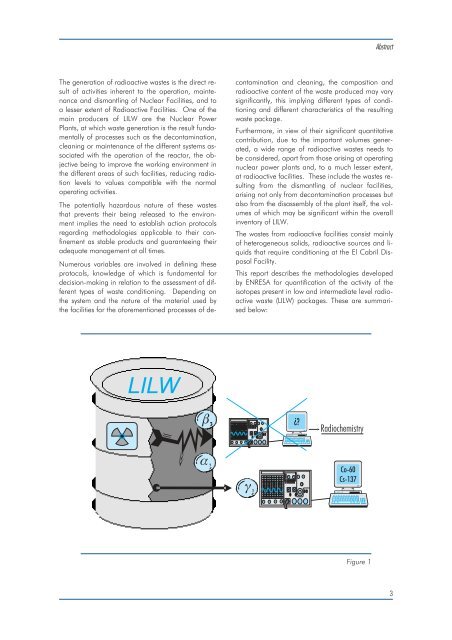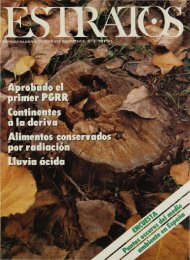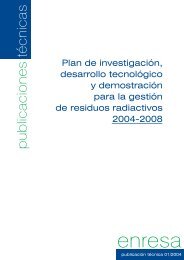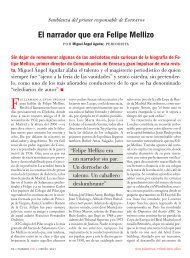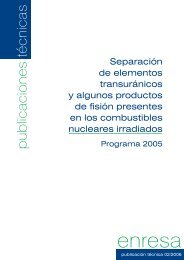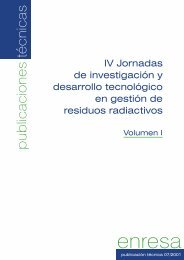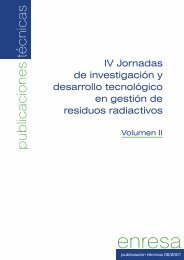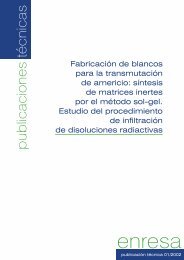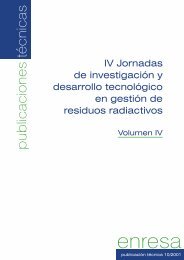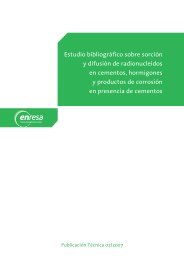You also want an ePaper? Increase the reach of your titles
YUMPU automatically turns print PDFs into web optimized ePapers that Google loves.
The generation of radioactive wastes is the direct result<br />
of activities inherent to the operation, maintenance<br />
and dismantling of Nuclear Facilities, and to<br />
a lesser extent of Radioactive Facilities. One of the<br />
main producers of LILW are the Nuclear Power<br />
Plants, at which waste generation is the result fundamentally<br />
of processes such as the decontamination,<br />
cleaning or maintenance of the different systems associated<br />
with the operation of the reactor, the objective<br />
being to improve the working environment in<br />
the different areas of such facilities, reducing radiation<br />
levels to values compatible with the normal<br />
operating activities.<br />
The potentially hazardous nature of these wastes<br />
that prevents their being released to the environment<br />
implies the need to establish action protocols<br />
regarding methodologies applicable to their confinement<br />
as stable products and guaranteeing their<br />
adequate management at all times.<br />
Numerous variables are involved in defining these<br />
protocols, knowledge of which is fundamental for<br />
decision-making in relation to the assessment of different<br />
types of waste conditioning. Depending on<br />
the system and the nature of the material used by<br />
the facilities for the aforementioned processes of de-<br />
LILW<br />
Abstract<br />
contamination and cleaning, the composition and<br />
radioactive content of the waste produced may vary<br />
significantly, this implying different types of conditioning<br />
and different characteristics of the resulting<br />
waste package.<br />
Furthermore, in view of their significant quantitative<br />
contribution, due to the important volumes generated,<br />
a wide range of radioactive wastes needs to<br />
be considered, apart from those arising at operating<br />
nuclear power plants and, to a much lesser extent,<br />
at radioactive facilities. These include the wastes resulting<br />
from the dismantling of nuclear facilities,<br />
arising not only from decontamination processes but<br />
also from the disassembly of the plant itself, the volumes<br />
of which may be significant within the overall<br />
inventory of LILW.<br />
The wastes from radioactive facilities consist mainly<br />
of heterogeneous solids, radioactive sources and liquids<br />
that require conditioning at the El Cabril Disposal<br />
Facility.<br />
This report describes the methodologies developed<br />
by ENRESA for quantification of the activity of the<br />
isotopes present in low and intermediate level radioactive<br />
waste (LILW) packages. These are summarised<br />
below:<br />
¿?<br />
Radiochemistry<br />
Co-60<br />
Cs-137<br />
Figure 1<br />
3


